Swiss drones to the rescue!
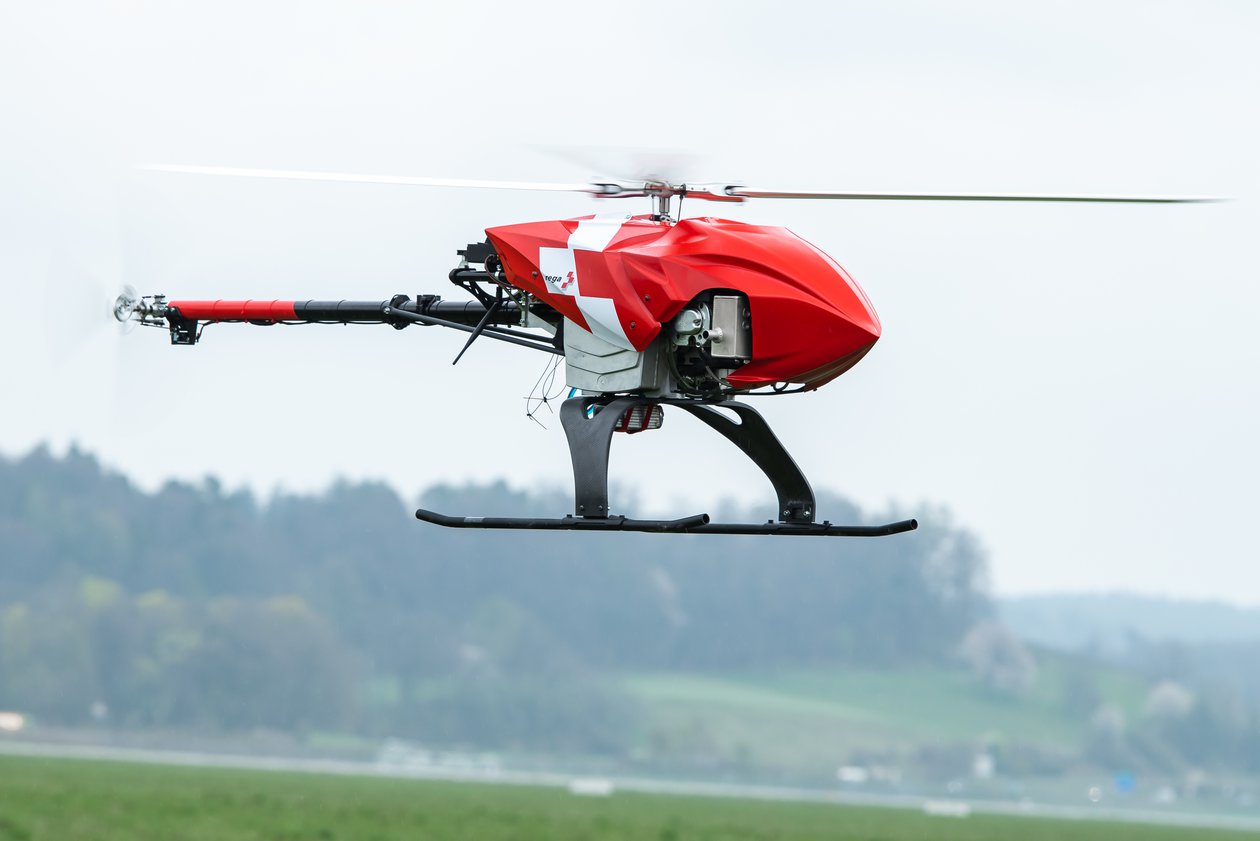
Researchers and mountain rescuers in Switzerland are making huge progress in the field of autonomous drones as the technology becomes more in-demand for global search-and-rescue operations. But barriers to entry remain.
Police and emergency services in countries like Britain, the United States and Australia are relying more and more on unmanned aircraft and drones fitted with thermal cameras and other hi-tech sensors to monitor coastlines, help find lost backpackers or even rescue koalas trapped in firestormsExternal link.
In Switzerland, the national rescue agency Rega has been testing an autonomous helicopter-style robot that can find people missing or in difficulty in the Alps.
The rescue service, a non-profit foundation supported by 3.5 million patrons, is widely used in Switzerland and increasingly in demand as more people flock to the mountains. Last year, it came to the aid of some 31 people per day who received medical assistance by air in Switzerland or abroad.
Rega’s new two-metre-long drone is equipped with cameras, sensors to detect mobile phones, an anti-collision system and an algorithm developed by the federal technology institute ETH Zurich that allows it to scan wide areas and autonomously recognise people on the ground.
Trained Rega operators determine the precise area the drone should search and start the device manually. Once the airborne drone detects a human on the ground, it sends a signal to the operators several kilometres away who decide whether to send a rescue team.
Rega is coy about the cost of the investment and insists that the device will not replace any of its existing services. Instead, it will be used to expand conventional rescue operations. For example, it will be deployed in cases where the helicopter is grounded due to poor visibility.
“We will not replace other means with the drone,” explains Rega drone project manager Sascha Hardegger. “In bad weather, the drone supports helicopters or search dogs.”
Drone Valley
Rega’s flying machine is one of the latest – and most concrete – examples of a drone that has flown from the lab into day-to-day operations. Over the past 15 years Switzerland has become a leader in drone research and development. A so-called “Drone Valley” has emerged, mainly between Lausanne and Zurich, with over 80 firms providing more than 2,500 jobs.
To pull together top Swiss research in this field, the National Centre of Competence in Research Robotics (NCCR)External link was formed in 2010, funded by the Swiss National Science Foundation, to develop “new, human-oriented robotic technology for improving our quality of life”.
Davide Scaramuzza from Umbria, Italy, leads the NCCR’s research into rescue robotics. His team at the University of Zurich has designed algorithms and developed autonomous drones with onboard cameras and sensors that are much smaller than the Rega drone and do not use GPS. This means they could be deployed in situations like an earthquake where they can enter and rapidly explore buildings in search of survivors far from the operator.
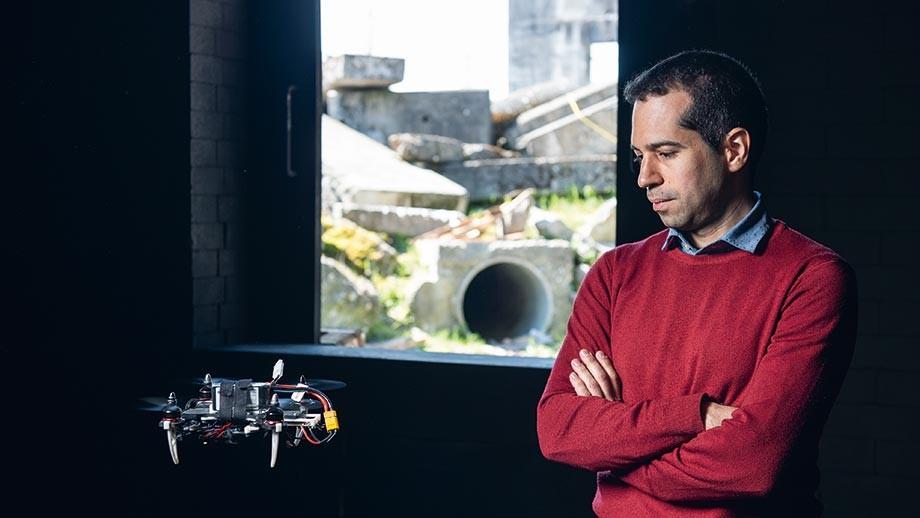
More
After an earthquake, drones to the rescue?
But to help rescue drones become more widely used, their designers still need to solve a few key problems: how to make them fly autonomously beyond the line of sight, be more reactive to obstacles and also be less bulky while packing the latest cameras and sensors that consume lots of power.
Faster and more agile
One of the biggest challenges is creating faster drones to cover longer distances, says Scaramuzza, who heads the university’s Robotics and Perception Group.
Drones have a limited battery life – 20-30 minutes of flight time – so the more ground they can cover, the greater the rescue mission’s chance of success, he explains.
“If you want a drone to explore the Fukushima nuclear plant, for example, you’d probably need a drone with a battery life of three to four hours,” he said.
Endurance and range are still an issue for Rega’s new drone. The 17kg flying robot is currently battery-powered with a two-hour range. It will soon be refitted with an internal combustion engine allowing longer flights and should be operational in 2021.
To try to improve drones’ speed and agility, Scaramuzza and his Zurich-based team have fitted their devices with event cameras, which are useful for obstacle avoidance. Instead of recording images or video frames, an event camera outputs a stream of data points triggered whenever a camera pixel detects a change in environmental brightness. Such changes correspond to movement or other disturbances in the surroundings.
And the results are ultra-rapid. This summer a small drone with an event camera flying at ten metres per second managed to dodge balls thrown at itExternal link. The drone could perceive and begin to dodge an object in just 3.5 milliseconds.
“Event cameras can see things 10,000 times faster than a standard camera,” Scaramuzza said. “In principle this means you can fly ten times faster than with a standard camera.”
His team is pushing the agility of drones in other ways. They worked with US tech giant Intel to build a drone with a navigation algorithm that allows it to autonomously perform high-speed tricks and flipsExternal link using on-board sensor measurements.
The researchers have even created autonomous drones that can “fold up” to squeeze through small spaces.
“We had a drone that could enter a small semi-collapsed room from outside through a small gap and find its way out using cameras,” he said. These were demonstrated to Red Cross search-and-rescue teams in Bern earlier this year.
‘Bird-like’ and packable
At the Swiss Federal Institute of Technology Lausanne (EPFL) scientists are also working on how to improve the agility, flight time and speed of the next generation of drones.
EPFL researchers recently presented a “bird-like” drone based on a goshawk with a movable feathered wing and tail, which allow the robot to turn or fly faster and slower.
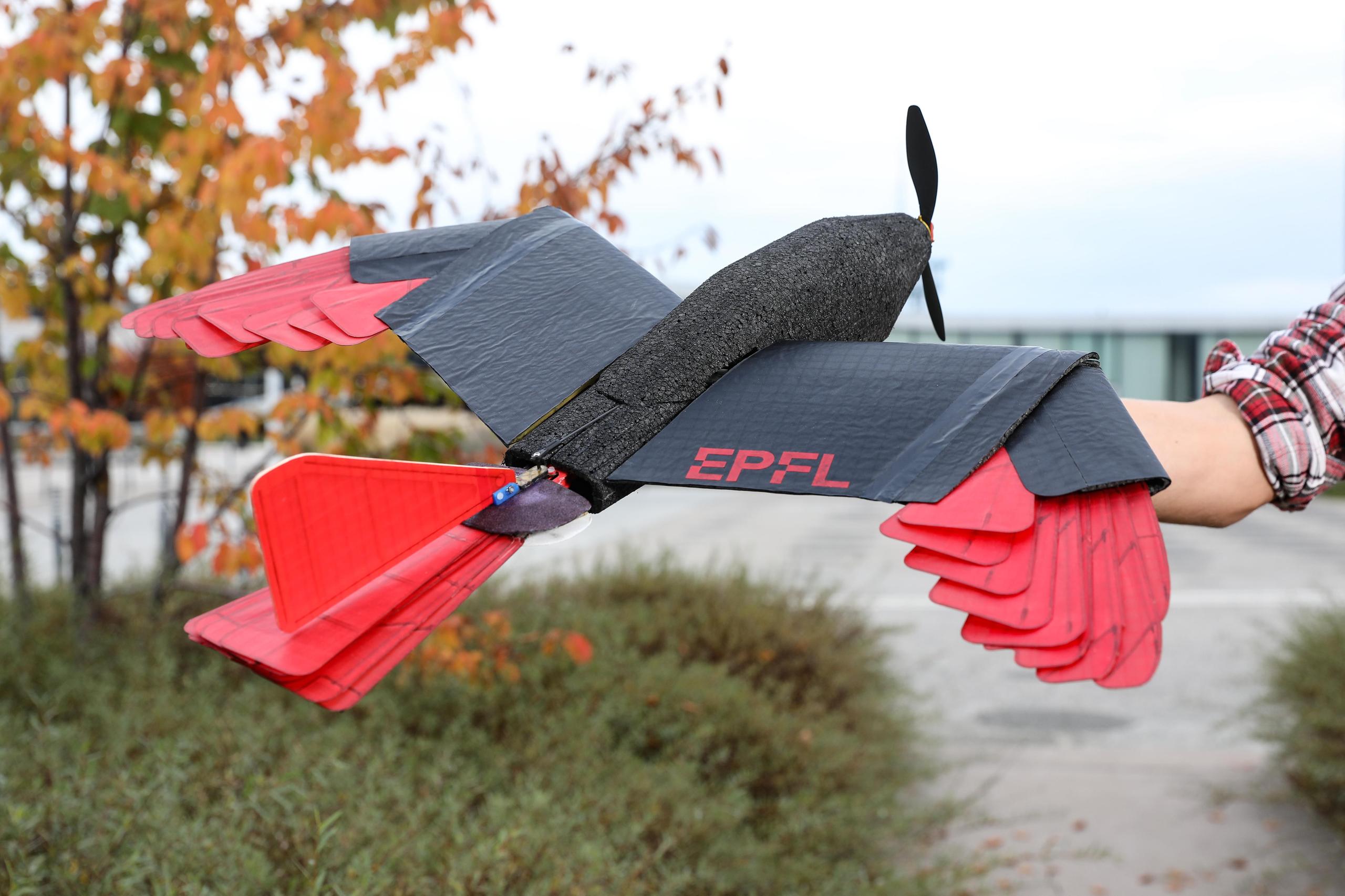
“This enormous agility would allow it to fly in cities, or around buildings rapidly or fly in forests. This is very important for rescue or inspection missions,” explained Dario Floreano, head of the EPFL’s Laboratory of Intelligent SystemsExternal link. In the next stage, the team plans to incorporate AI to allow the drone to fly semi-autonomously.
Another line of research seeks to improve the usability and safety of drones for disaster mitigation work.
Collision-resilient “cage drones”, commercialised by EPFL spin-off Flyability, have already been deployed in search-and-rescue operations. Another local spin-off, Dronistics, is developing cage delivery drones like the “PackDrone”, which can be folded up flat and transported in a backpack. They have been trialed in the mountains of the Dominican Republic.
“With the PackDrone we’ve shown its capabilities to deliver an emergency kit to someone trapped on top of a building,” said Floreano, who is also the director of NCCR Robotics.
From hype to application
The 12-year NCCR programme has invested around CHF10 million ($11 million) in rescue robotics since its launch. This is money “well spent” if you look at the number of related spin-offs and scientists involved, generating “at least five times more money and many jobs”, Floreano argues.
But specialists acknowledge that for now the rescue drone market remains niche and tough-going. Despite the large number of new drone companies in Switzerland, few specialise in rescue drones.
“The most profitable markets for drones are first the inspection of bridges and power lines, then agriculture, safety and security – of which search and rescue is a sub-sector – and entertainment,” Scaramuzza explained. “No company specialises in search and rescue. It’s a side project for them.”
Flyability stands out in this specialist field. It specialises in inspection and exploration of indoor and inaccessible spaces and has hundreds of customers in over 50 countries. Their drone technology recently helped scientists reach the depths of some of the world’s deepest ice caves in Greenland, for example.
“They have the most usable product for search and rescue but it’s human-piloted,” said Scaramuzza.
Another Swiss firm that has seen commercial success is the Swiss-American non-profit WeRobotics. Launched in 2015, its network of Flying Labs helps communities in low-income countries gain access to the technology and training they need to use drones for local disaster relief and sustainable development efforts. The network, which is present in various African countries as well as Latin America and Asia, uses drones to map and monitor terrain, deliver supplies and medicines and search-and-rescue efforts.
The Rega project could be an exception, because, as Floreano admits, emergency teams and specialists have not yet fully grasped the utility of rescue robots, which can seem overly complex.
“Disaster mitigation teams have so many things to master when there is a disaster in a short period of time, so it’s not yet obvious for them to use drones, which add additional complexity,” he said.
He also sees a lot of hype and misunderstanding surrounding what robots can do.
“Search and rescue and disaster mitigation are an aspiration for us, certainly something we aim at when we are designing our robots. But it’s something very challenging. There’s still a big gap and a lot of work to do,” he added.
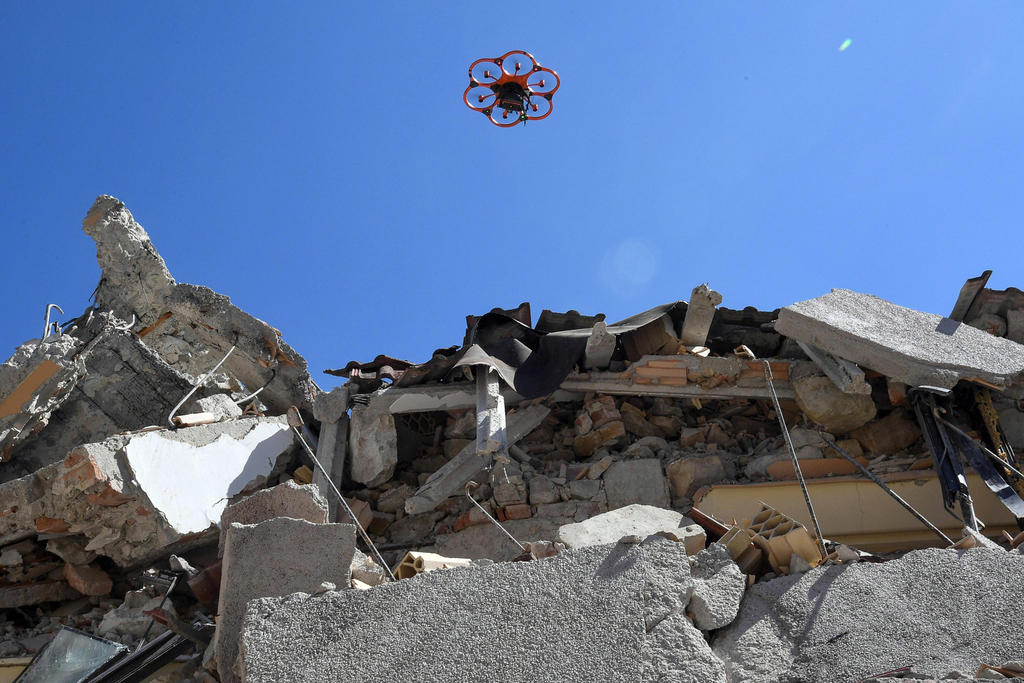
More
How drones are transforming humanitarian aid

In compliance with the JTI standards
More: SWI swissinfo.ch certified by the Journalism Trust Initiative










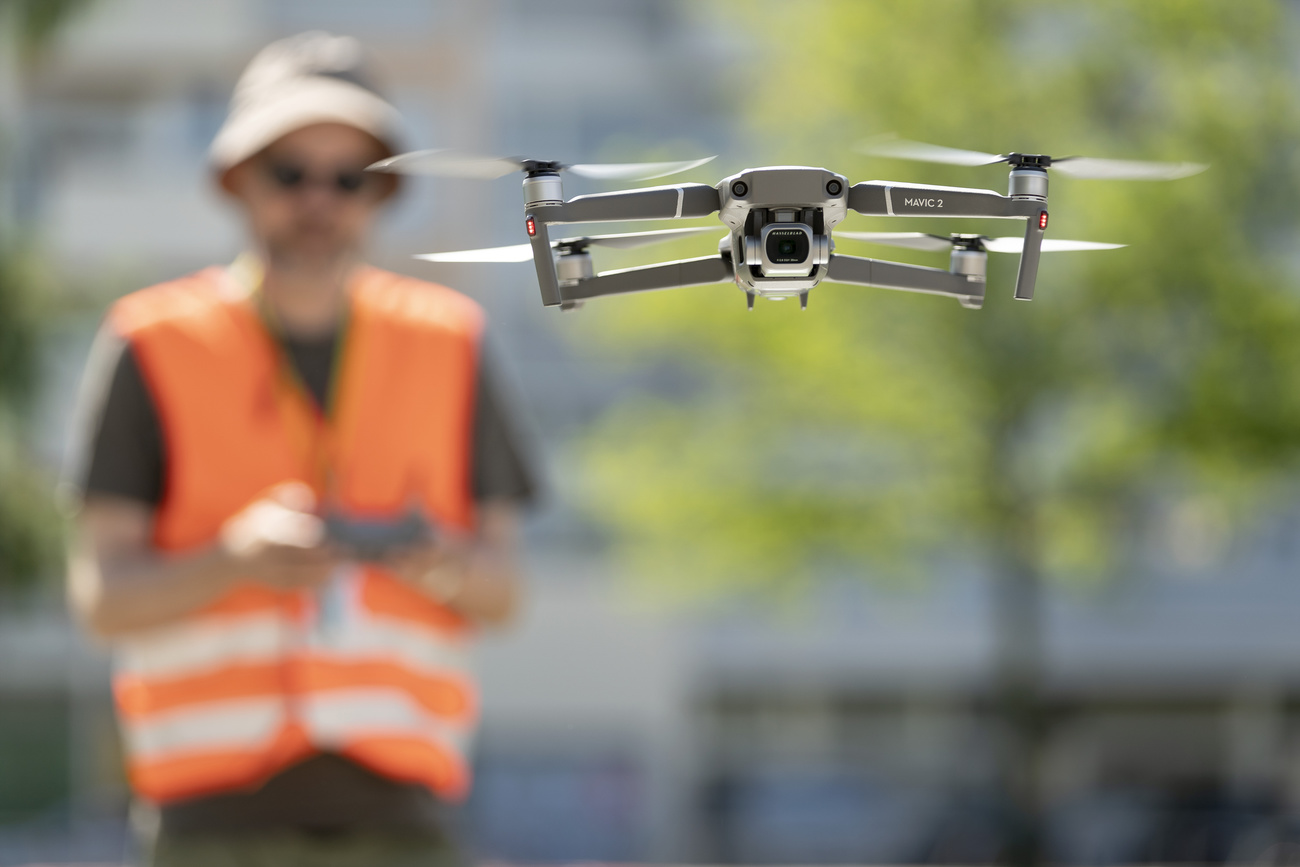
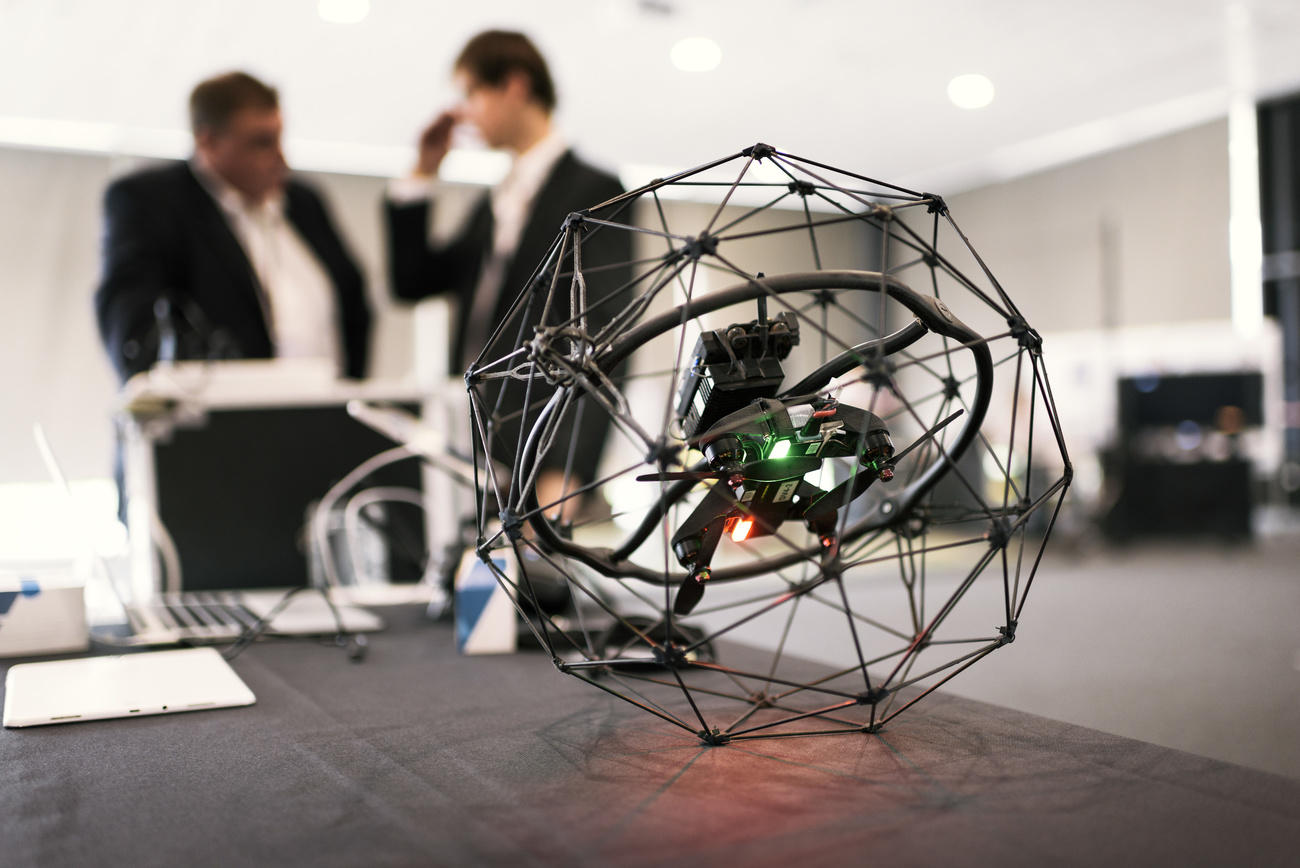
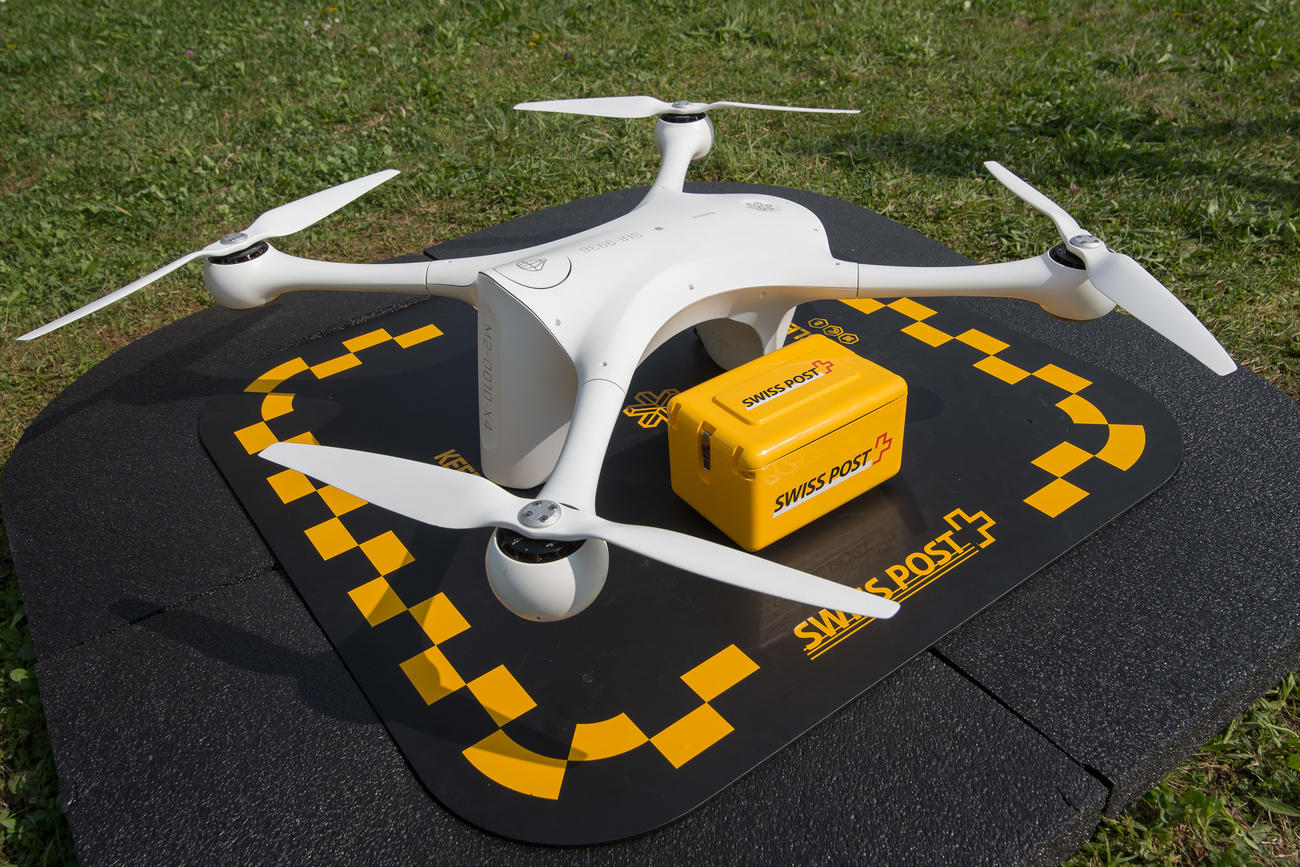

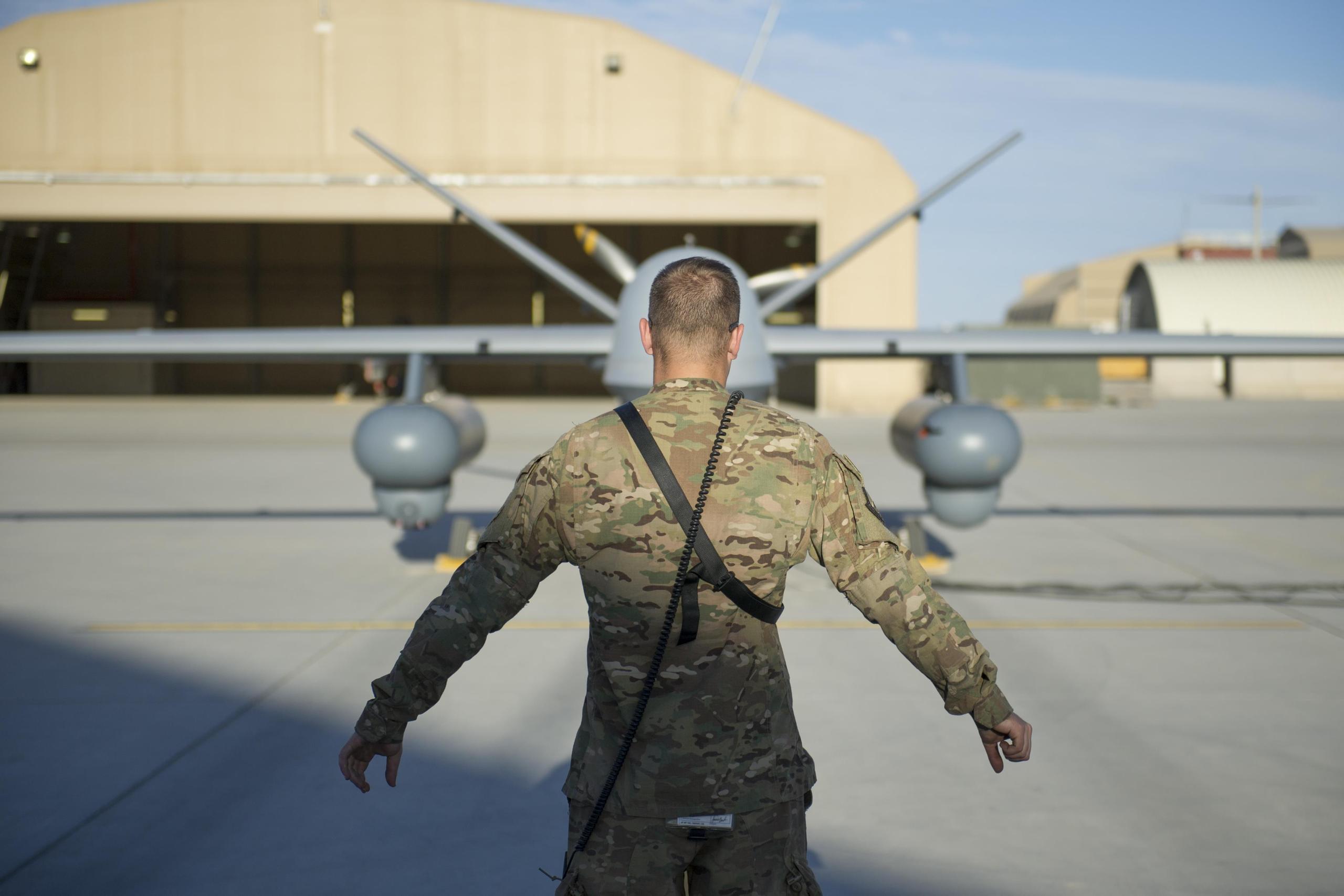
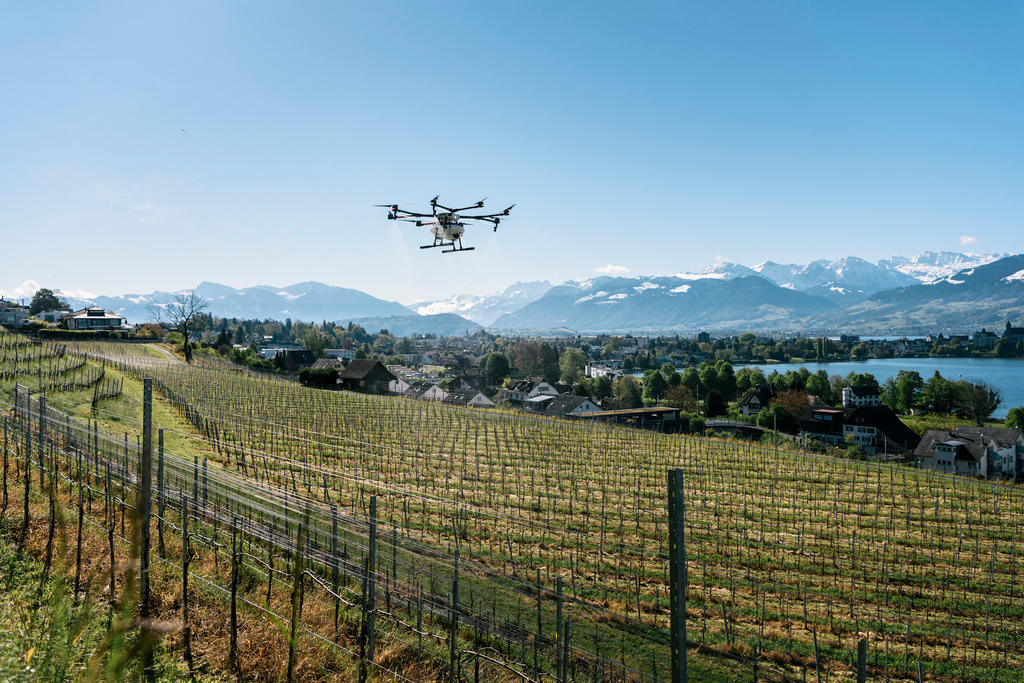
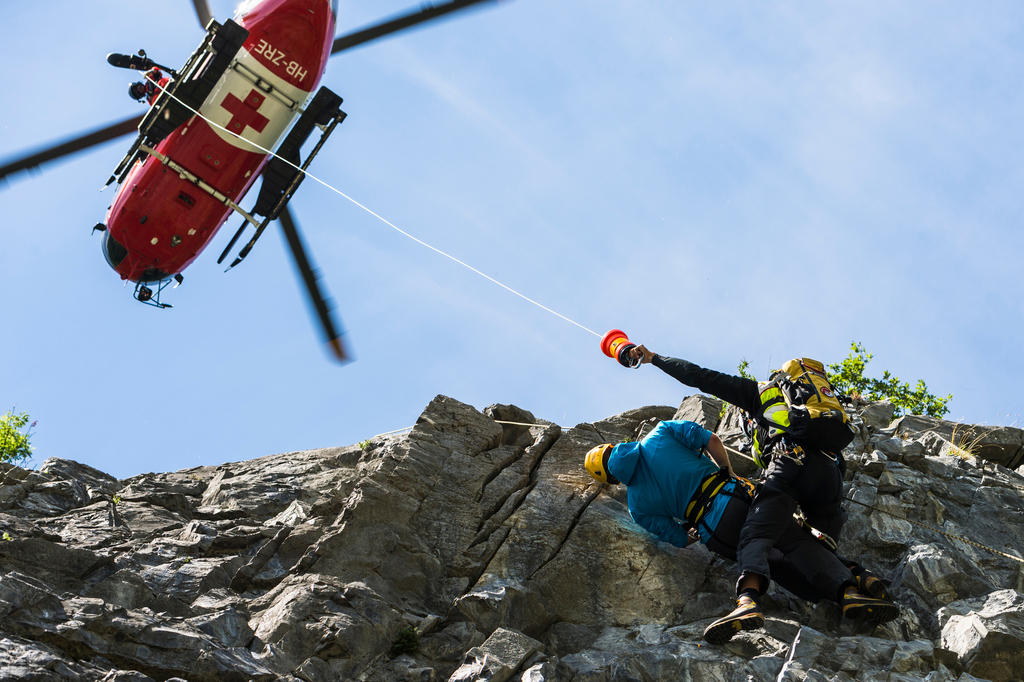

Join the conversation!